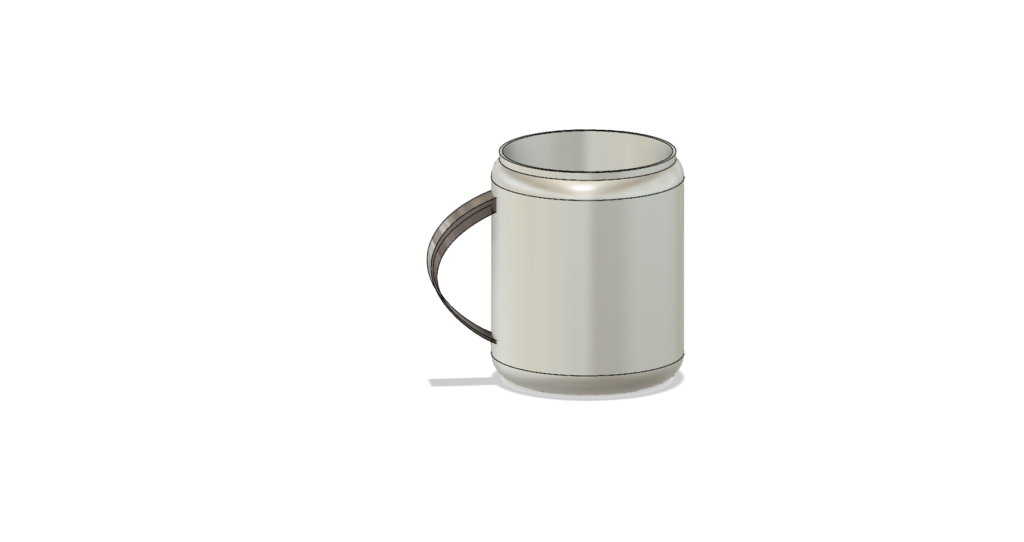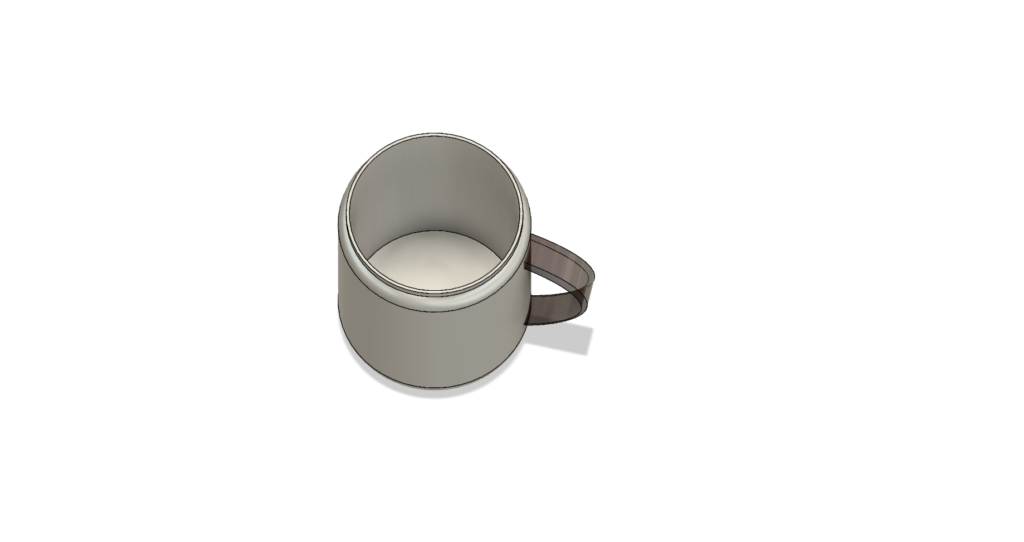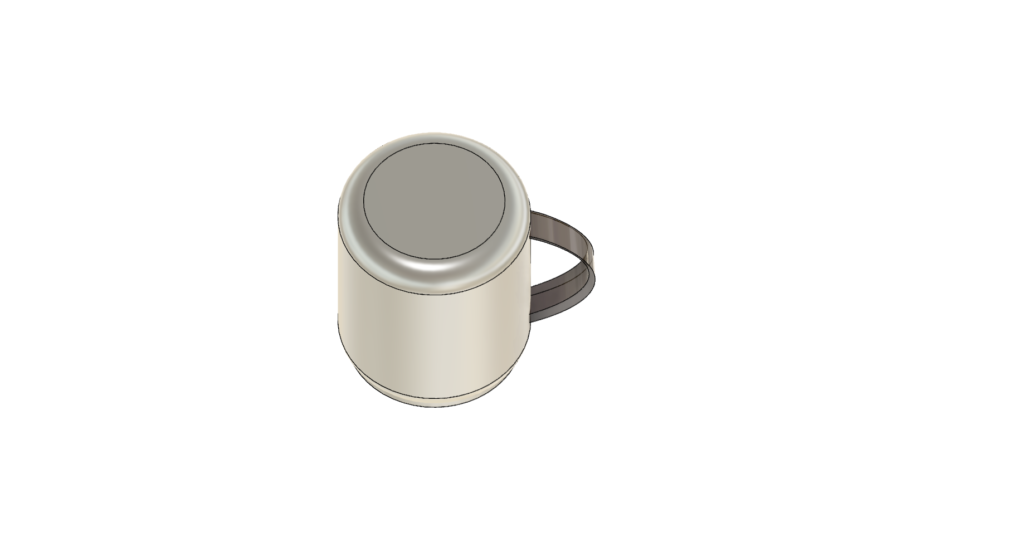


How easy/hard was it?
As someone who doesn’t identify as tech-savvy and has limited experience with any 3D modeling softwares, I was quite overwhelmed by the variety of functionalities Fusion 360 had to offer. I found it hard to navigate the toolbar as some of the function labels were a little jargony and not self-explanatory. At first I tried to model a badminton racket, but the amount of detail required in the strings intimidated me so much I ended up giving up and turned to something very basic and easy to realize—the mug. Looking back, I shouldn’t have been deterred by the technical difficulties but actively looked through tutorials on the internet. That way I could figure out more ways to embellish an object as simple as the mug as well.
What elements particularly bogged me down?
I had difficulty finding the specific functionality I wanted to apply. For example, hoping to expand the width of a surface, I kept trying with “Extrude” but failed. It turned out that I’d just needed to use “Thicken” instead. There was also a difference between extruding a surface and a solid. It even took me a while to realize that I could just right click my mouse to open up a set of features applicable to the selected component and move it easily. Another technical issue that bogged me down was that after a while of modeling, the object began to move to wherever the cursor went, which made it extremely difficult to control. So I had to log off/in back and forth. I thought it was a problem with my laptop, but I also ran into this issue after switching to a lab computer.
What compromises did I have to make?
I wasn’t able to model a perfect arc for the mug handle, so I just sketched curved lines with the “Fit Point Spline” feature. Before I found out “Thicken” was a thing, I simply “Moved” part of the sketch, making the top part thicker than the bottom, which unexpectedly added a degree of creativity to an originally ordinary mug handle.
What humanistic uses can you envision for this tool in the areas of research or teaching?
3D modeling with Fusion 360 works well to visually reconstruct the image of archaeological discoveries (such as ancient ruins), preserving a digital presence of historical artifacts three-dimensionally. For everyday teaching-aid in STEM, Fusion 360 can help with building physical models to prototype microscopic or astronomical objects. Additionally, if animation can be employed in these models, we can better see and understand the scientific mechanisms through them than through traditional 2D printing.
Tips
Be prepared to spend a lot of time in front of the screen if you are new to Fusion 360. I recommend checking out a user interface tutorial (such as the one made by Product Design Online) and experimenting with all the features on a random thing before you start on your first Fusion 360 project.
I sometimes get stuck wanting a product out of dabbling that I hardly explore possible tools to use, and therefore grow into a habit if using a small selection of tools. So, I’m definitely taking note of just experimenting with no specific direction.